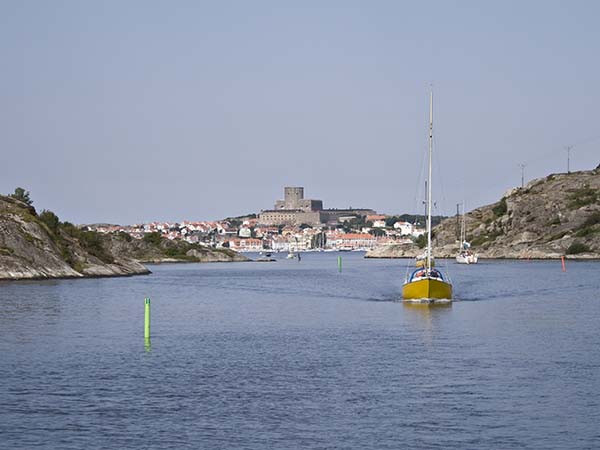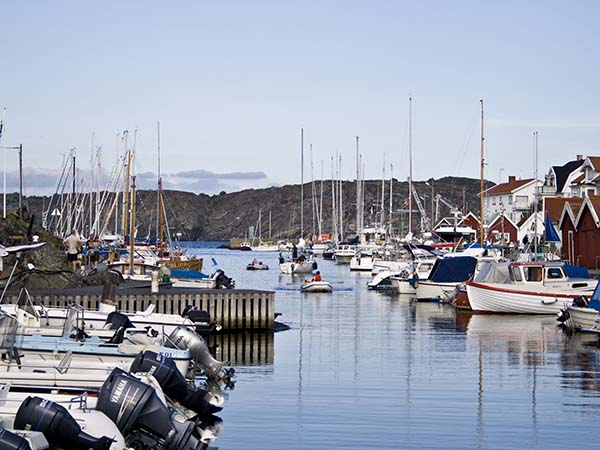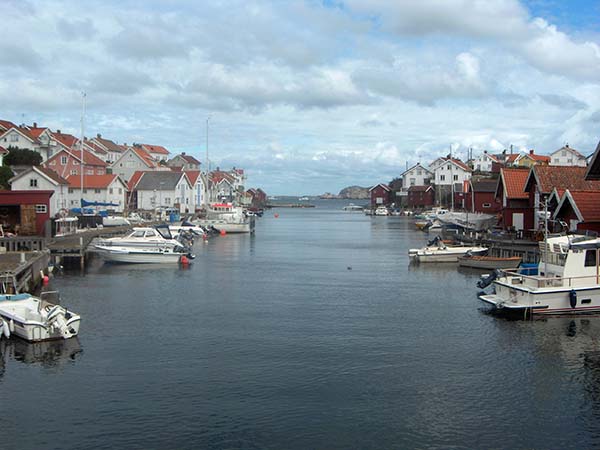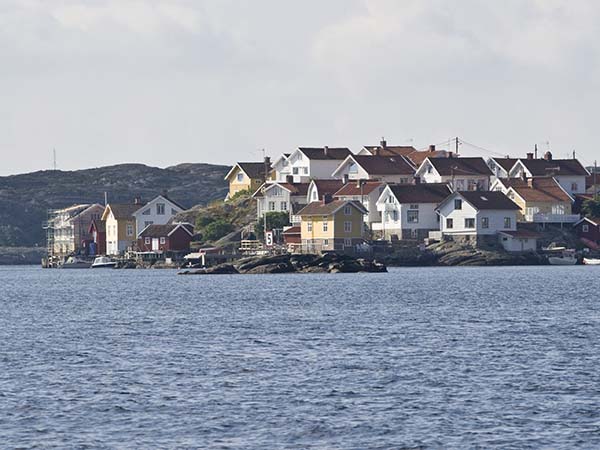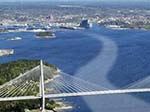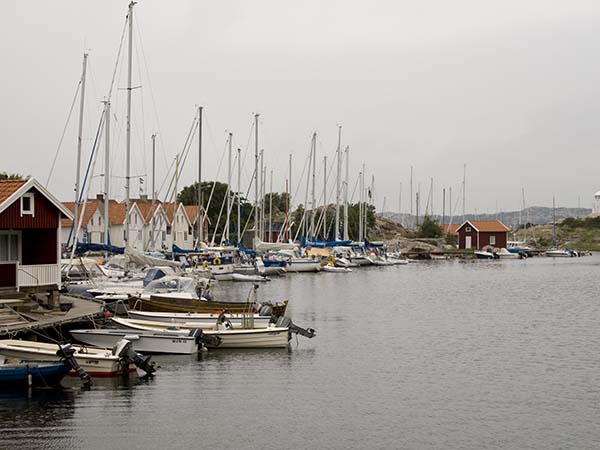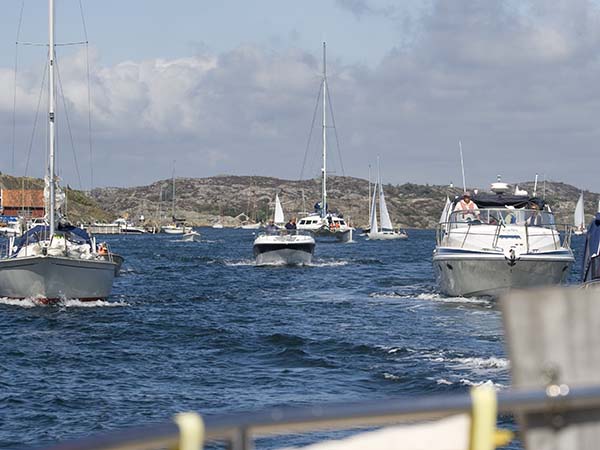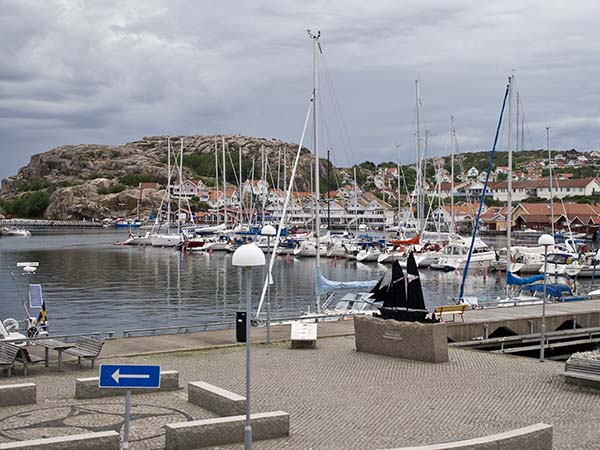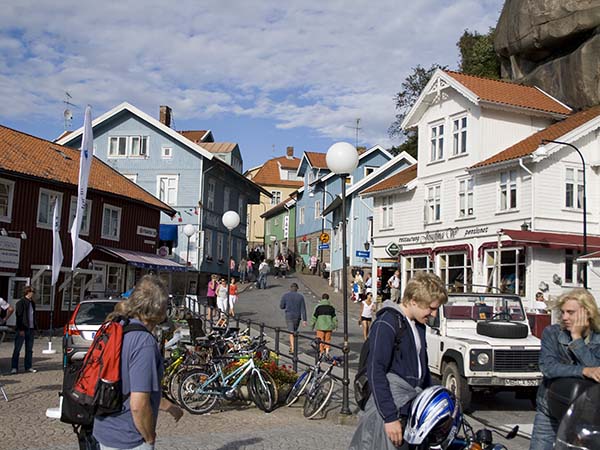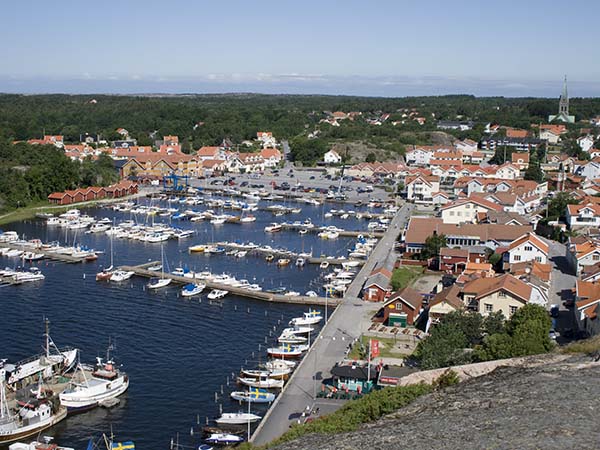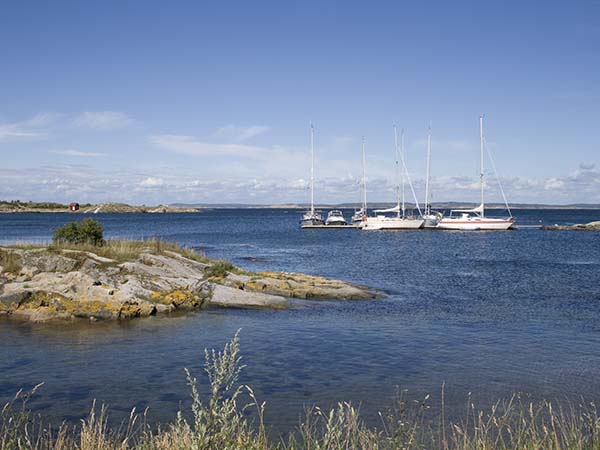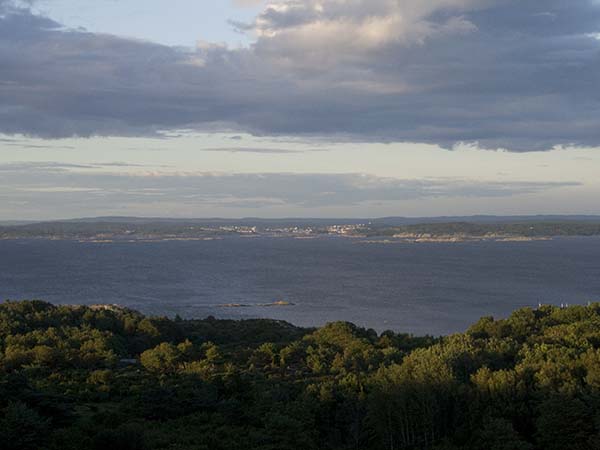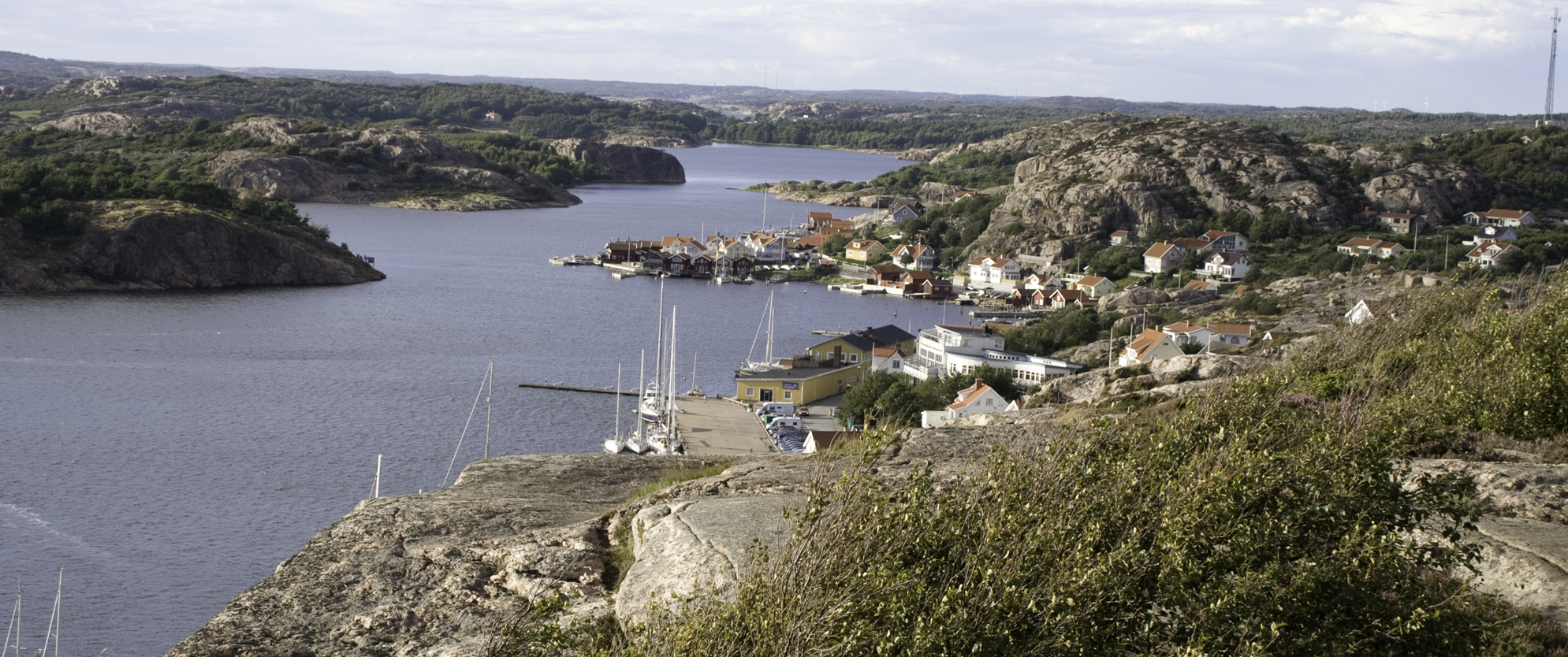
Swedish Western Archipelago
For many, the West Coast of Sweden is it. Much more dramatic, and, for Brits at least, closer and easier to reach than the eastern coast, the barren rocky islands, the pretty white painted villages and the numerous harbours make this area the one to aim for. Against that, it has to be said, it is busier, somewhat smaller and with fewer distinct routes than the 'other side'. At the height of the summer it becomes almost unpleasant. Go a few weeks either side of high season though, and you have the place to yourself.
Weather wise, its less predictable than the east. The run of Atlantic depressions tend to pass over the area on their way north and there is seldom the kind of 'blocking high' you get in July over the Eastern Baltic.
For a Brit, the odd thing is the number of red ensigns. The entire place is full of Norwegians sailing south for cheap (well comparatively) food and booze. Swedes are almost guests in their own country.
The area starts immediately north of Göteborg, and the southern part includes the yachting centres of Marstrand and Smögen. There is a lovely trip north via Fjällbacka and the heart of the Archipelago until you reach the 'ultimate' destinations of the Koster islands. Twenty miles north of that and you are in Norway.
The two main islands Orust and Töjrn can be circumnavigated, an interesting trip providing you don't pick the day of the 'round the islands' race.
Marinas abound. Unlike the Eastern coast, most mooring in harbours is by fixed line to the quay, or bows-to with a stern anchor. There are plenty of nature harbours too, although the practice of mooring 'alongside' a rock still seems strange.
The descriptions here merely scratch the surface of what is really a very interesting area. See the resources for more details.
Marstrand
A sort of Swedish 'Cowes', Marstrand is the west coast's yachting and racing centre. Marstrand itself is on an island and has a number of good restaurants as well an interesting castle and a number of up-market shops. The large marina (230 berths) fills rapidly and on a bad day the channel heaves with small boats, and that's without being there in race week. Getting there from Göteborg however is lovely, make sure you go through the Albrechtsunds Kanal.
Åstol
Probably one of the most atmospheric parts of the whole archipelago, Åstol is a small island just north of Marstrand, almost split in half by its harbour. Obviously extremely popular at the height of summer, its worth rafting up just to sample what a true west coast destination should be like. The island is small enough to walk around and there is a reasonable shop and a couple of acceptable restaurants.
Gullholmen
Just round the corner from Ellös (of Hallberg-Rassy fame) lies the pretty island of Gullholmen. It has a sizeable harbour and a number of restaurants and there are good views from the hill behind the village, although it does get packed at weekends. There is a ferry if you'd rather leave the boat in Ellös. The narrow passage is not for the faint-hearted, particularly if you've just picked up your brand new Hallberg-Rassy.
Fiskebäckskil
This idyllic and sheltered harbour is a much nicer place than Lysekil, the large town opposite. Lyckans slip is a good boatyard if you need some emergency attention and if you can find a berth its not a bad place to leave the boat for a few days. There is a bus to Uddevalla (although why, god knows) and a ferry to Lysekil. There is a supermarket but NO cash machine, as we found out to our cost. There is a lovely walk round the village and some spectacular views. The marina restaurant is spiffing too.
Uddevalla
It seems a good idea to travel up the wide and interesting fjord from Lysekil to Uddevalla. Its a sizeable town with most amenities. However, take a tip from us and don't bother. We've never been there when its not raining and its architecture is early Milton-Keynes. We think its real name is Valhalla. Worse, when you get there, its 20 miles back again.
Malmön
Set back off the main drag the first thing you see is the big marina. Inviting though this may seem, ignore this and head for the small fishing harbour. There are fewer facilities here but it's sheltered and atmospheric. Just beyond the little bridge are some reasonable bathing beaches (rare on the west coast, where its usually rocks). You can always walk back to the marina where there are some good restaurants.
Smögen
This is the touristy day-trip destination of choice. A sheltered (when you are all the way in) and characterful little harbour it does a roaring trade in prawn sandwiches. We first went there out of season when it was lovely. We went back last year in season when it was dreadful with noisy boats and tons of coach visitors. Take your pick. Just round the corner is Kungshamn. Less character than Smögen, its a rush-rush bus stop during the day due to the presence of a large supermarket right by the quay. At night though, most boats bugger off and the town reverts to character. There is a pretty board walk along the sound and you can climb up to the spectacular bridge.
Sote Canal
Just north of Kungshamn lies a canal cut through the rock. (There is also a route outside if you don't fancy the canal and the weather permits it). The canal is no more than two boats wide (so single file traffic) and at the height of the season its like trying to force the M25 down to one lane. There are no locks but there is one bridge, which usually opens on demand (and closes whenever it sees us coming).
Hunnebostrand
Just north of the canal is the small town of Hunnebostrand. There is a large marina with buoys one side, stern anchors the other. (The visitors harbour is the second on the right after the canal, the first is a private marina).
The town is quintessentially western archipelago, although not as nice as Fjällbacka. There are the usual small shops and some outlets selling cheap clothes.
Fjällbacka
Sometimes called 'the heart of the west coast' Fjällbacka lies in a stunning setting among huge cliffs. The small town wends its way up though a cut on the rocks. It is possible to climb to the top of the cliffs (this is Sweden, after all) for a magnificent view over the islands. There are a number of reasonable restaurants, an excellent fish mongers and bakery.
There is a large marina. The guest harbour bit fills up early but there are usually berths among the pontoons opposite, although its a long walk round.
Grebbestad
Another nice little town, and reached by a pleasant sail from Fjallbacka, the marina is near the entrance to the sound. Despite indications to the contrary, there's not many free berths further in. There a few shops and restaurants near the marina and a few more in the town.
Again, you can climb the cliffs behind the town for a great view (There are steps).
Koster Islands
Reputed to be the sunniest location in the whole of Sweden (yeah, right) this is final destination for many holidaying Swedes and Norwegians. The islands are stunning, with a lovely mix of just enough civilisation to make them interesting but not so much you lose the island feel. Most of South Koster is a nature reserve
There are a number of small marinas. The most popular is probably Bopallen, near the main settlement and with a foot ferry to the southern island. Alternatively Vettnet, on the eastern coast is a good spot, but not in an easterly blow.
Strömstad
Only about 5 miles from the Kosters, this is the largest town in the area with a vast (250 berths) marina and is, ahem, permanently full of Norwegians. They pop down over the border to fill up with food and booze before popping back again. Consequently the harbour tends to be raucous. The town is OK and there is an interesting story behind the town hall.
Just across the water is a decent marina, which is much quieter and may have a few spare berths. The mainland is reached via an automated foot ferry which needs a special card (200SEK) to operate it.

